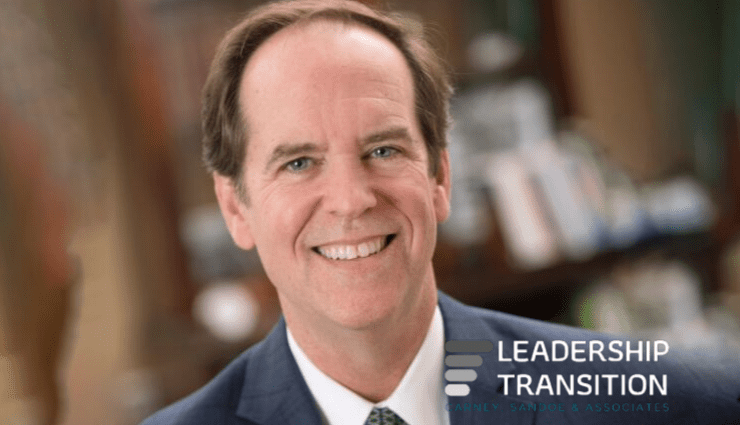The Key to Successful Headship Transitions: Shedding Old Thinking, Building New Frameworks

This is a piece is from CS&A’s summer focus on leadership transition. Check out the full series here.
One of the defining character traits of independent schools is our relentless optimism. It is hopefulness born of necessity as few other organizations succeed in a marketplace where they charge money for a product that is otherwise given away for free. This golden retriever-like enthusiasm is never more fully on display than in the announcement of a new head of school.
Each year, a couple hundred board chairs around the country issue letters to their school communities announcing the conclusion of a successful head of school search. They write to inspire stakeholders with the promise of the new leader, the good match of his or her qualifications, and the way that those involved in the search have rallied to this stranger’s side in support of a bright future. There is every good reason to be excited by the opportunity that a new leader presents, as independent schools generally run thorough, democratic, and intensive searches. The search usually includes an honest assessment of the challenges the new leader will face, further bolstering the feel-good tone of those board chair letters.
The truth in most organizations, however, is that there is a narrative of personal and institutional risk that typically remains untold and in the shadows of this story of opportunity. Leadership transition in any sector or at any level—for-profit or not-for-profit; school, business, or faith community; CEO or C-suite, etc.—is expensive and time consuming. Further, the data gives us reason to temper our excitement about both the leader’s and the organization’s future.
In a 2017 book by McKinsey senior partners Scott Keller and Mary Meaney entitled “Leading Organizations: Ten Timeless Truths,” the authors cite multiple studies indicating that between 27% and 46% of new leaders are considered disappointments or failures after two years. The quantifiable consequences of this troubling statistic include weaker financial performance, less engagement, and a spike in the departure of talent. Imagine what that board chair letter sounds like if it accounts for the reality of this risk factor.
The underachievement numbers stand up whether the new leader is an internal or an external hire and likely explain an increase in CEO turnover across sectors. Not surprisingly, a solid majority of struggling leaders tag organizational politics and culture as the culprit. While this data was not collected exclusively out of independent schools, there is no reason to think that the laws of nature governing transition to a head of school or senior leadership role would be any different in our industry and, indeed, might be amplified because of the breadth of constituencies that we serve.
There is a lot to be said about how independent schools manage transition and the proven tactics that can be employed in order to come out on the right side of the data. For the most part, this aspect of transition is successful to the extent that schools make the effort to access and act on readily available and abundant research. The all-too-obvious challenge here is that leadership transition at the head of school level requires leadership. With the current head of school often sidelined for valid and, frankly, sometimes invalid reasons during the transition, this leadership can be in short supply. The recipe is not difficult once you know it: make a plan based on proven (not intuitive!) principles and locate the power to execute on that plan in someone who is authorized to make things happen. If there is a reason that someone cannot be the outgoing head of school, then anointing another senior person who knows the lay of the land is critical. For as complicated as it can be, this is actually the easy part.
The hard part goes back to the struggling leader who attributes his or her problems to factors in the organization. While this may be true, it is rarely helpful. New leaders succeed because they know that the single determinative factor for their success happens within them. There are not enough board transition advisory team meetings and get-to-know-you cocktail parties to substitute for the acute self-awareness a new leader must develop and maintain in order to be effective. Why is this? The answer is in that board chair’s letter.
Every new leader is hired on the basis of a track record that he or she established over the course of a career. And every board chair’s letter includes this track record as the primary evidence for optimism about the new leader’s tenure. As a candidate, this track record provides proof of professional and relational competence and the bias for action that every search committee seeks. Naturally, the new leader hears an implicit—and sometimes explicit—message in the search courtship: “We need you to do that here.” New heads are excited to comply and eagerly repeat what they are reinforced for – as leaders do in all walks of life.
It’s not hard to see there is a trap here. A new school is a new context, and the potentially fatal risk for new heads is that they translate all of this reinforcement into solutions to problems that don’t exist in their new setting. It is not surprising that the majority of struggling leaders believe that politics and culture are their Achilles’ heel. Of course they are. What else short of criminal activity or gross negligence could explain why a wildly successful leader on one campus would come to a new school and underachieve?
Politics and culture, however, are facts just like campuses, faculties, and students. The new environment must be understood on its own terms and not filtered through the new leader’s past frameworks. It is the incoming leader’s ability to unlearn the very habits of mind and leadership behaviors that led to success in their prior post that is the X factor in navigating transition. (Note that the focus is on unlearning habits and behaviors, not judgment and wisdom.) The paradox here is summed up in Marshall Goldsmith’s timeless advice, “What got you here won’t get you there.”
How do we develop this self-awareness and learn to unlearn? Again, the resources are in plain sight, although some require reaching beyond well-trodden independent school paths: intensive 360-based leadership development seminars, executive coaching, feedback strategies, digging into high quality scholarship, and more. The first step is in defining the problem to solve correctly. Human beings are naturally inclined to attribute the source of our problems to something outside ourselves. And there are not many associations or consultants that can make a living by implying, “Well, maybe it’s you…” So, it is up to the incoming leader to take charge of this most important part of the transition in whatever way shows the most promise based on what we know about ourselves.
The good news/bad news here is that mastering this unlearning process will do more than just help the new head be in the successful half of their peers at year two. For leaders at or near the pinnacle of their organizations, learning, unlearning, and relearning will determine success throughout their careers. They will make it through the initial transition only to discover that their leadership context has changed again—a new competitor has emerged, or a new opportunity offers a huge impact—even though they are still in the same school, same office, same parking spot. The capacity to shed old ways of thinking and build new frameworks will serve them throughout their careers and allow their schools to thrive. The challenging yet comforting truth is that effective leadership transition just sets the stage for effective long-term leadership.
Keith Evans has been president of the Westminster Schools in Atlanta, GA since 2014. Prior to Westminster, he was head of Collegiate School in Richmond, VA from 1999 to 2014. Keith can be reached at keithevans@westminster.net.








